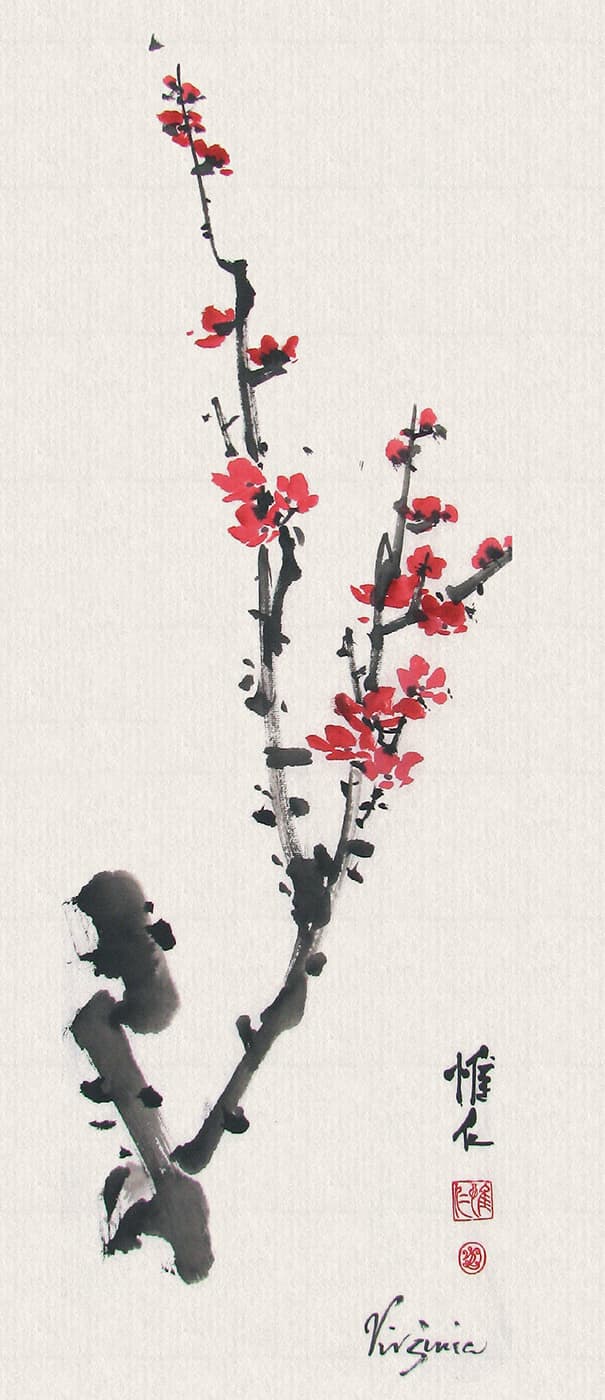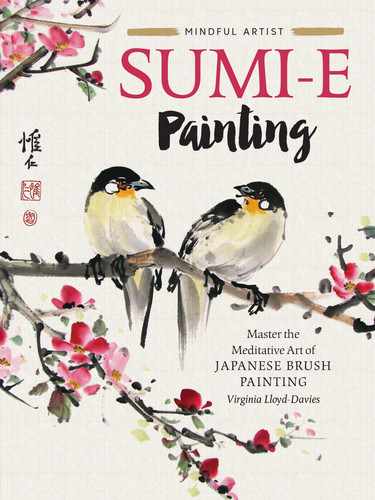The Four Gentlemen
Sumi-e (Japanese) or shuimo (Chinese) quick-stroke painting is based on Chinese calligraphy and was brought to Japan by Chinese Zen Buddhist monks. The Four Gentlemen are bamboo, orchid, chrysanthemum, and plum. They represent the four seasons and are traditionally the foundational subjects for those studying Asian brush painting. Studying these four subjects will help you familiarize yourself with all the calligraphy strokes that sumi-e painting is based on so that you can form an understanding of all the other painting subjects as well.
Bamboo
Symbolizing summer, vigorous growth, and upright posture and integrity, bamboo combines strength and beauty. To paint bamboo, hold the brush vertical to the paper and move in straight lines with vigorous intent. (shown here for complete step-by-step instructions on painting bamboo.)
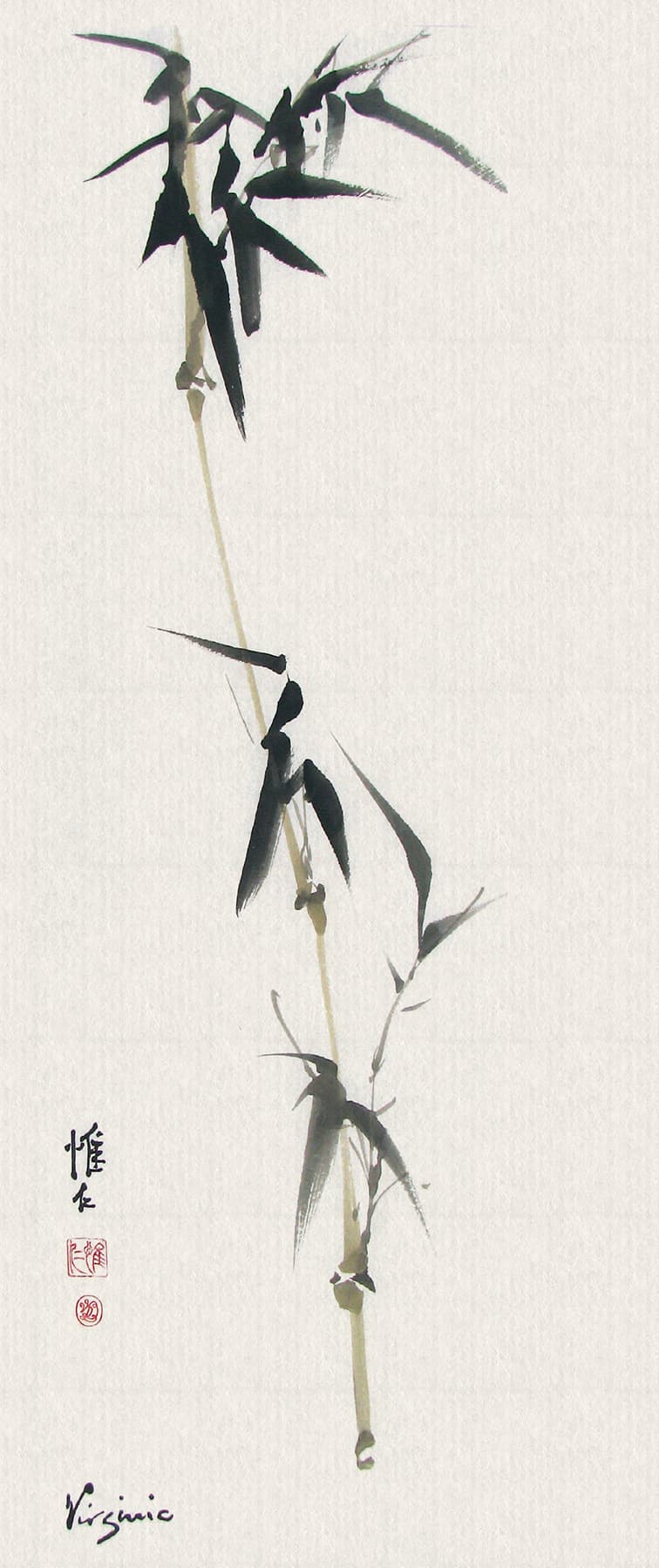
Orchid
The orchid represents spring, hope, and new beginnings. As you paint an orchid, keep the brush vertical, but also develop curved, wavy leaves and sweet, delicate flowers. (Go to shown here to learn how to paint an orchid.)
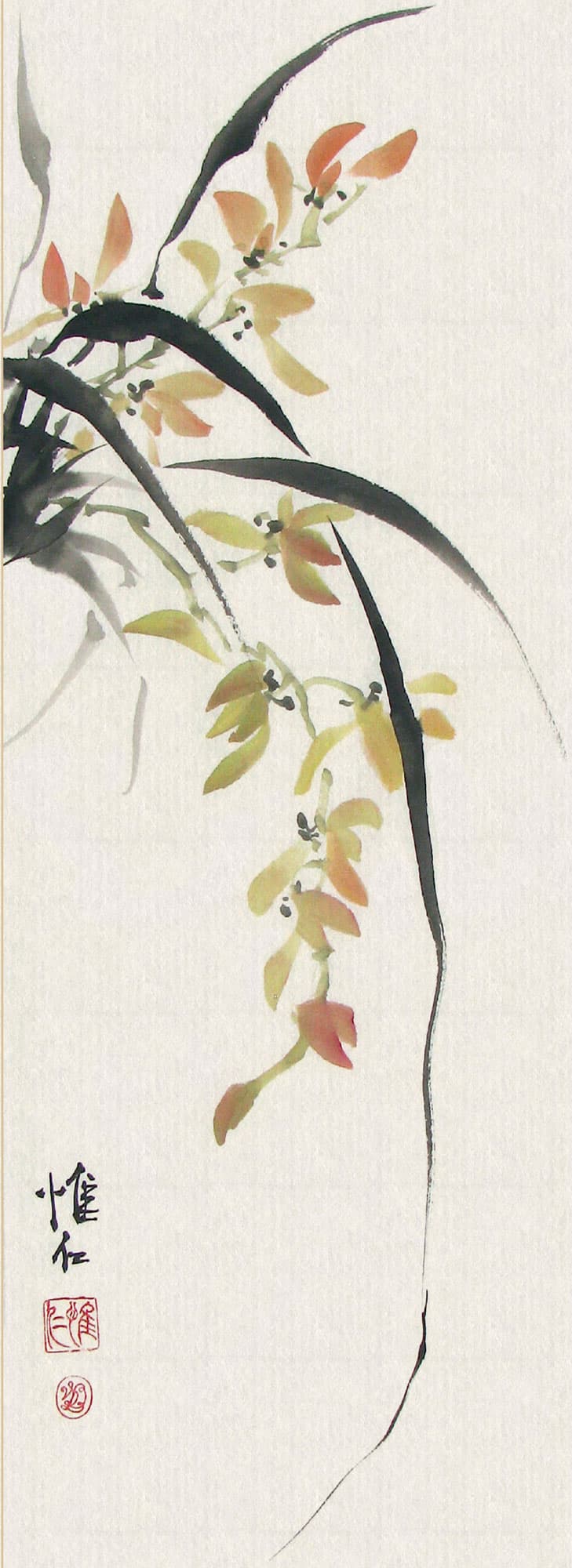
Chrysanthemum
The chrysanthemum is the symbol of autumn and braving the frost, as well as moving forward and blooming despite fear. Combine vertical tip strokes for the flowers with side strokes for the leaves, developing your technique to include outlined petals. (Visit here to paint a chrysanthemum.)
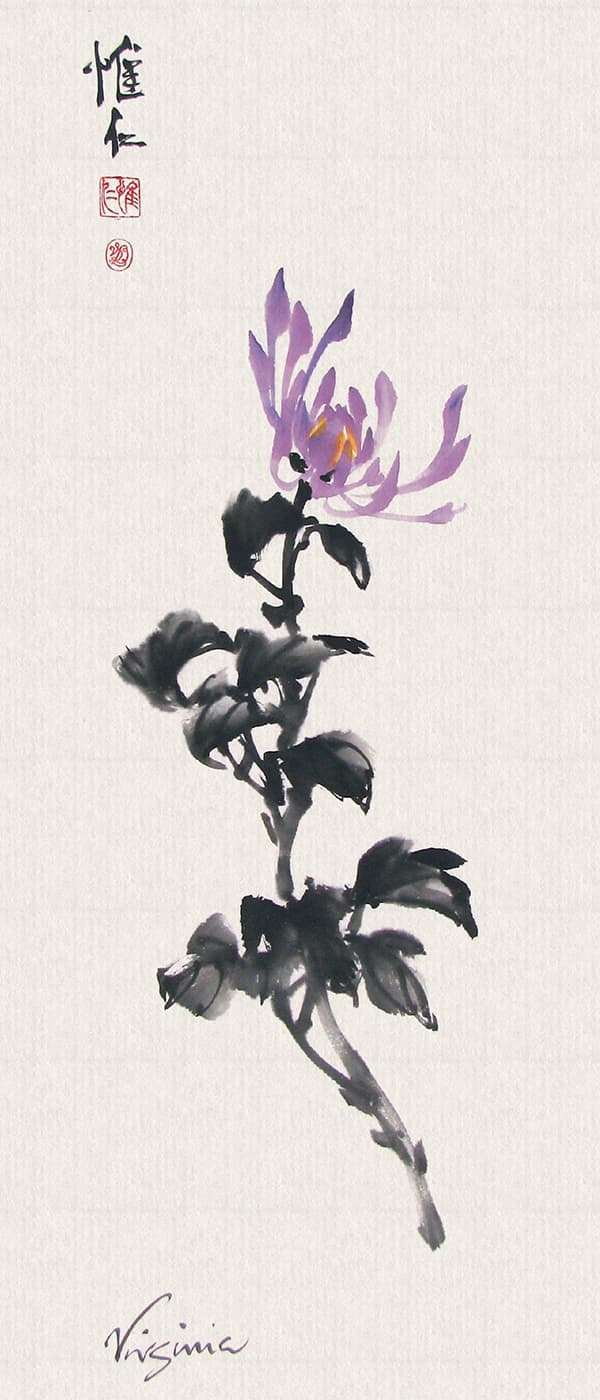
Plum
In sumi-e painting, the plum is the symbol of winter, tenacity, and rugged perseverance in the face of hardship. Carve the old branches into the paper; then add new branches and tender blossoms to represent the promise of new life and inner beauty despite adversity. Study of plum creates a bridge between floral painting and the study of trees for landscape painting. (For more instructions on painting a plum, shown here.)
